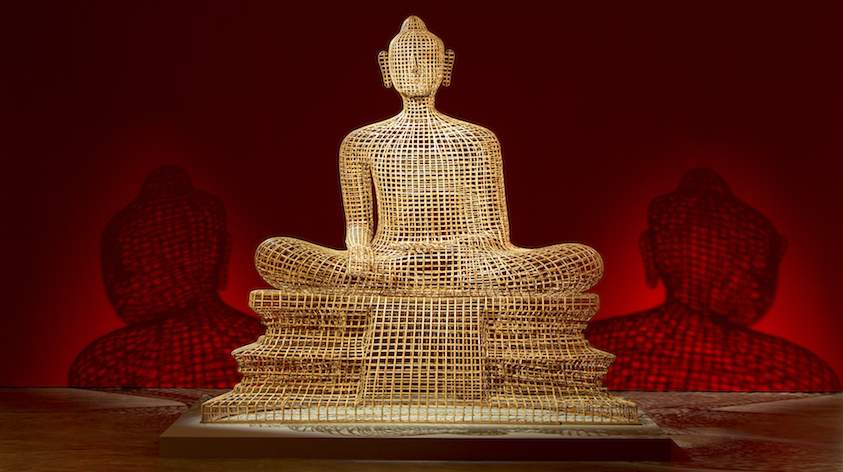Collection+: Sopheap Pich
Cambodia's preeminent artist brings his woven works to Sydney.
Overview
Sopheap Pich is an artist who's had it particularly rough. Born in Cambodia in 1971, Pich and his family fled the genocidal Khmer Rouge in 1979. The group made their way by foot to a refugee camp on the Thai border before resettling in the US.
He began pre-medical studies but dropped out to attend art school where he attained his BFA and MFA. In 2002, the artist moved back to Cambodia and began working with local materials, primarily bamboo and rattan (a slender, wood-like plant). As a child, Pich had spent a great deal of time making toys and hunting devices by hand. He explains, 'when I first started using rattan to make sculptures, I was reminded of the adventures I had as a kid. I try to approach my new works with the same curiosity and openness to possibility. Aside from their useful qualities, bamboo and rattan are also very satisfying to work by hand and the simple techniques I employ allow for complex shapes and thoughts to come through'.
Pich's works are staggeringly eloquent with a marvellous sense of lightness and are steeped in references to Cambodia's cultural and political history. They range in scale, but the centrepiece of the exhibition, a woven statue of Buddha, is about three times the size of a person. The walls of SCAF have been painted a rich, dark maroon. The colour envelops as you move around the space and the lighting has created fabulous shadows that appear against the walls. The shadows themselves feel like an integral part of the works.
Pich is perhaps Cambodia’s most internationally regarded artist. He received a solo show at the Metropolitan Museum of Contemporary Art earlier this year, pretty much the Holy Grail for any artist. Sopheap Pich's exhibition at SCAF is part of Collection+, a new project that sees curators choose individual artists whose work is represented in the Gene and Brian Sherman Collection. The curators then use their selections as a jumping off point to build an exhibition by sourcing other pieces by the artist from local and international collections.





